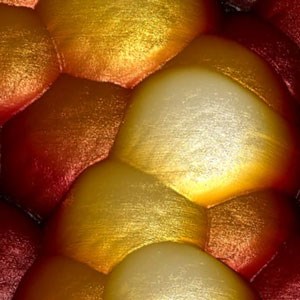Rare earth elements are used in batteries, computers and cell phones. As we are using more and more electronics around the world, the need for these 17 elements increases. However, mining or recycling rare earth elements is complex as it is both expensive and harmful to the environment.
Extracting rare earth elements with magnetic nanoparticles
Researchers from SLU has, with colleagues from Stockholm University and University of Aveiro, in Portugal, developed a simple environmentally friendly method that efficiently extracts rare earth elements from solution using magnetic nanoparticles. This method removes 20 times more metals from the solution that previous reported nanoparticle techniques. In addition, it does it faster.
Rare eart elements are hard to mine
Rare earth elements are not actually rare, but are often found together in geological deposits. The concentration in the deposits are very low, hence mining is complicated with large amounts of unwanted material. Extracting or recycling rare earth elements requires big volumes of solvents in high concentration, something that generates lots of hazardous waste.
A more sustainable method would be to use silicon dioxide or polymer nanoparticles to pull rare earth elements from solution. On the particles’ large surface area, organic molecules that bind exclusively with rare earth elements are attached. How efficient the molecules are at adsorbing rare earth elements depends on the number of organic molecules on them.
The technique proves to be far more efficient
Elizabeth Polido Legaria and her collegues wanted to see if the nanoparticles would take up more rare earth elements at higher pH levels.
– To our surprise, this led to a new technique that turned out to be far more efficient and easy to use than regular silica nanoparticles, says Elizabeth Polido Legaria, the main author of the study.
The research team made magnetic iron oxide nanoparticles covered with silica, and added them to aqueous solutions of three rare earth metals: lanthanum, dysprosium and neodymium. When they added ammonium hydroxide to slowly increase the pH of the solution, rare earth hydroxides precipitated out of the solution and started forming crystals on the silica nanoparticles surface. The nanoparticles loaded with rare earth metals were easily separated from the solution with a magnet.
Separation in an environmentally friendly way
In addition, by mixing the nanoparticles with ammonium sulfate and shaking in three steps, the rare earth metals could be separated in an environmentally friendly way. The nanoparticles could be reused three times without any loss in efficiency.
– The process itself is very easy and since no specific organic ligands are needed, the material preparation is much simpler, and therefore the production can be scaled up, says Associate Professor Gulaim Seisenbaeva, another researcher behind the study.
The process will be tested in a demonstration plant
The researchers are now testing the process on real-life rare earth elements ore samples. They are also developing industrial contacts and planning to create automated equipment to build a demonstration plant.
